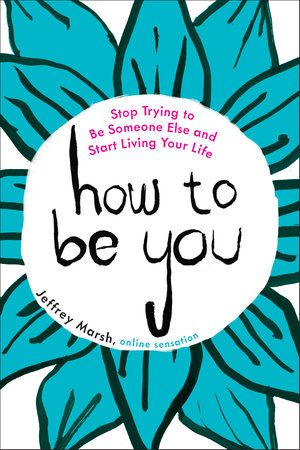
August 17th, 2016
How to Be You: Stop trying to Be Someone Else and Start Living Your Life
by Jeffrey Marsh
From the publisher:
This book is about how to finally give up on feeling bad about yourself and discover the best person you can be.
An interactive experience, How to Be You invites you to make the book your own through activities such as coloring in charts, answering questions about how you do the things you do, and discovering patterns in your lives that may be holding you back. Through Jeffrey’s own story of “growing up fabulous in a small farming town”–along with the stories of hero/ines who have transcended the stereotypes of race, age, and gender–you will discover that you are not alone, can deepen your relationship with yourself, and find the courage to take a leap that will change your life.
Thanks to the publisher for providing a copy for review.
First things first: How to Be You is definitely not right up my usual alley. It’s not fiction (it’s a self-help exploit with an edifying dash of autobiography), and it’s not YA (well, maybe it is a little, but it’s a middle grade venture at soul). With my two cut-and-dried literature cornerstones notably absent, the amount of bookish enjoyment anyone is guaranteed to get out of this volume is questionable right off the bat. That being said, Jeffrey Marsh does eventually prove to redeem himself. He pulls through with the help of some hilarious one-liners, spontaneous artwork, and legions of drama.
A lovely innovative concept from which many self-helps could likely benefit, the interactive piece is well done and probably the best part of the book. As a former earnest advocate of personality quizzes and crayons, I self-professedly enjoyed the colouring and fill-in-the-blanks.
Furthermore, Marsh’s personal anecdotes were unbelievably trying; my kudos go to him for enduring them and walking away all the stronger. If nothing else, they will remind you that if he could withstand his own demons, you can doubtlessly survive whatever trials you’re currently facing.
It’s obvious that this book is intended for a younger audience. It reads easily and repetitively; Marsh reiterates each and every one of his messages over and over again, as if his use of different wording would obliterate the previous occasions from your memory. Fortunately, although occasionally vexatious beyond belief, this signifies that there is effectively no way one could escape How to Be You without some level of understanding.
It’s not perfect– there is such a thing as too much Wonder Woman to achieve any semblance of perfection– but I’m sure it’s all aces in its own niche. Whether or not that particular niche is for you is up in the air. Recommended to desolate youths seeking inspiration and all those wholly fed up with Chicken Soup for the Soul.
I’ll keep you posted,
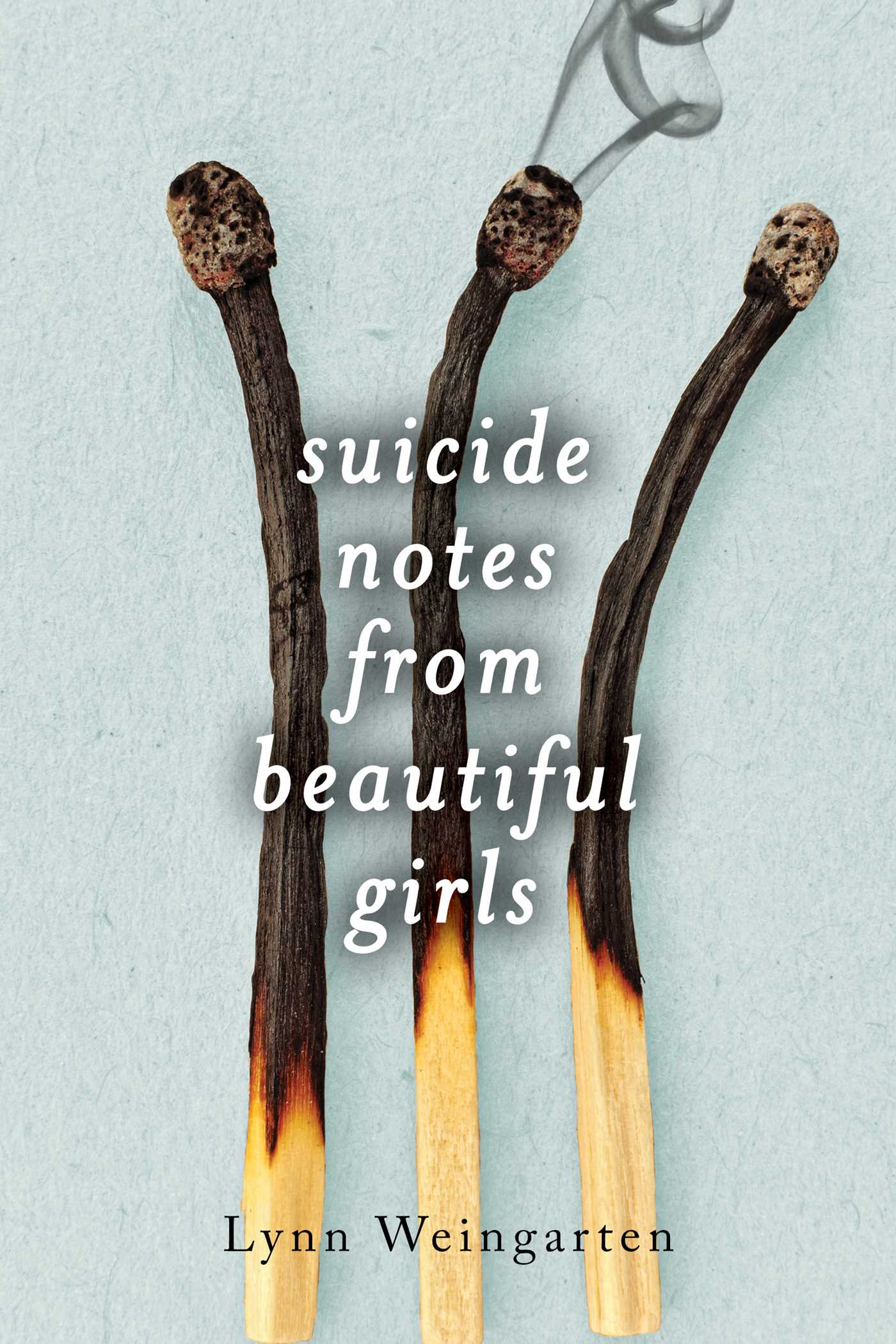
Ana's Rating
Readers Rating
From the publisher:
The New York Times bestselling “taut, sophisticated thriller” (BCCB, starred review) packed with twists and turns that will leave you breathless.
They say Delia burned herself to death in her stepfather’s shed. They say it was suicide.
But June doesn’t believe it.
June and Delia used to be closer than anything. Best friends in that way that comes before everyone else—before guys, before family. It was like being in love, but more. They had a billion secrets, binding them together like thin silk cords.
But one night a year ago, everything changed. June, Delia, and June’s boyfriend Ryan were just having a little fun. Their good time got out of hand. And in the cold blue light of morning, June knew only this—things would never be the same again.
And now, a year later, Delia is dead. June is certain she was murdered. And she owes it to her to find out the truth… which is far more complicated than she ever could have imagined.
Sexy, dark, and atmospheric, Suicide Notes from Beautiful Girls will keep you guessing until the very last page.
In picking up the Macbook, Moleskine, or whatever other writing apparatus suits their particular eclectic taste, every YA author enters into an implicit contract with their readers. The contract is as follows: I, the reader, will forfeit a handful of hours of my treasured youth in exchange for (at worst) a mediocre read and (at best) one helluva roller coaster of euphoria, glee, and other such sweet emotions. If occasionally and for any reason the author finds this to be impossible under the circumstances, that is tolerable. I am willing to accept the gamble– it’s an occupational hazard, after all. That being said, at the barest minimum I deserve a sense of closure. If I’m going to regret picking up your book, you had better damn well not waffle about the ending.
Lynn Weingarten has breached this contract.
I should have known that Suicide Notes from Beautiful Girls was a dreadful idea as soon as the alarm bells started softly pealing in my head– I knew I had heard her name before. For this is the same Lynn Weingarten who wrote The Secret Sisterhood of Heartbreakers back in 2012. You won’t find its review on my blog, because as a rule I don’t pass judgement on books I DNF not twenty pages in. But from what I remember, it was terrible.
I’ll give her this: her writing is spectacular. I’d almost call it a cross between that of Lauren Oliver and Tahereh Mafi— like a stream of consciousness, if your thoughts were more coordinated and you had a poet’s soul. Hands down the best part of the novel, it was at times my only motivation to keep reading. Weingarten was even able to accomplish incorporating multiple flashbacks interpolated throughout the chapters set in the present day, a feat that many more skillful than her have tried and failed to achieve.
Her characters are remarkably rendered, as well. June has all of the grit of a dandelion in November, while Delia seems to have been a force to be reckoned with, a hurricane of a teenage girl. Together, they drive the theme of friendship off the beaten path and down towards darker territories: codependency, need, poison. Unquestionable loyalty and unfaltering love cannot be virtues when each stakeholder is a miasma to the other. Female friendship is a theme so seldom explored in the world of YA that my kudos must go to Weingarten for her peerlessness. She may not be breaking any glass ceilings, but she has moxie, and that’s a trait I admire.
Where she fails without question is the plot. Suicide Notes from Beautiful Girls sets off to a slow start and refuses to improve from there on out. The twists will either knock you off your rocker, or you’ll see them coming from a mile away (before you even pick up the book, if you read the blurbs). The ending is laughable. We’ve stuck with these characters throughout over 300 pages and are left with what? A vague allusion and a cryptic note. That is all.
I suppose we are intended to decide how it ended for ourselves. The denouement could go one of two ways, and we are left to judge which series of actions transpired. I am the person who abstains from doing math problems if I cannot check my answers at the back of the textbook, so you can only imagine to what extent this amateur venture drives me out of my mind. Suffice it to say that in my eyes, the last chapter effectively decimated the novel as a whole.
So in the end, it does seem that Suicide Notes from Beautiful Girls is merely belles-lettres, after all. Or is it? It’s on you. 2/5 stars.
I’ll keep you posted,
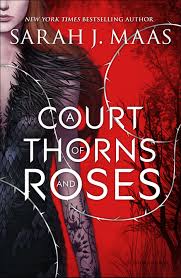
Ana's Rating
Readers Rating
From the publisher:
She stole a life. Now she must pay with her heart.
When nineteen-year-old huntress Feyre kills a wolf in the woods, a beast-like creature arrives to demand retribution. Dragged to a treacherous magical land she knows about only from legends, Feyre discovers that her captor is not an animal, but Tamlin—one of the lethal, immortal faeries who once ruled their world.
As she dwells on his estate, her feelings for Tamlin transform from icy hostility into a fiery passion that burns through every lie and warning she’s been told about the beautiful, dangerous world of the Fae. But an ancient, wicked shadow over the faerie lands is growing, and Feyre must find a way to stop it . . . or doom Tamlin—and his world—forever.
I’ve spent the past week gorging myself on the complete works of Sarah J. Maas. Needless to say, Throne of Glass is one of the best fantasy series I have ever read. I simply couldn’t stop reading until I got every single published instalment out of my system (there’s six so far if you include the series’s prequel novellas, which I so obviously do). Indeed, calling the series alarmingly addictive– and highly badass– would be putting things lightly. It seems, however, that even the greats don’t hit it out of the park every single time. To my utter disappointment, I’m afraid that there is simply no parallel universe in which A Court of Thorns and Roses is anything but a very garrulous, very stupefying thorn in my side.
My foremost problem with the novel happens to be its protagonist: I simply don’t like Feyre. There’s no other way to put it. Remorseless and whiny, she spends the vast majority of her ample time complaining about her life’s general state of affairs and preening herself on her apparent moral high ground. What does she actually do all day that makes me mad as a March hare? you might ask. The answer is elementary, really: she spends her time sitting on her ass like a glorified medieval trophy wife. In other words: she paints. While her big, strong boyfriend prowls the grounds, risking his life for the collective safety, while her peers are off battling the “blight” that imperils their very world, Feyre stays shuttered inside, all art and no spine.
She doesn’t even bother to inconvenience herself by accepting a certain someone’s many pointed offers to teach her poor, misguided soul to read. It seems that she’s far too busy making snarky remarks towards anyone who is remotely kind to her, and being ungrateful towards any characters who continuously save her worthless hide, to waste any time at all ameliorating her illiterate self. You’ll have to forgive me if, as a reader, I take this as a rather grave offense.
What’s more is that Feyre foolishly endangers her life quite frequently, I would say. And this would not be a transgression in and of itself– if there’s one vice I understand, it’s living your life with reckless abandon– were it not for her refusal to fight back against whichever rapscallion currently has her in their clutches. Because where would be the reason in resisting? Those fairies are so big and evil, she wouldn’t stand a chance, anyway! Evidently, if you are looking for even one whit of Celeana Sardothien in A Court of Thorns and Roses, prepare to look further. You will find no hellcats here.
Her love interest, our darling Tamlin, is really no better. Standoffish and arrogant, he communicates mainly by serial grunting. But of course, he and Feyre will fall in love. (Didn’t you know that this was a Beauty and the Beast retelling, and thus that true love would conquer all?) The spray tan romance was further enhanced by the little hitch involving Tamlin being a beast in absolutely no conceivable way, except perhaps if we are counting that endearing charm. To the contrary, we are subjected to multiple wordy descriptions of his irresistible good looks and lengthy reveries concerning the upper half of his face, concealed at all times by a magic mask.
A Court of Thorns and Roses even encloses numerous plot holes, which I in no way expected from the illustrious Sarah J. Maas. I’ll give you only one example– my favourite– which I feel easily typifies the novel as a whole: despite being magically knocked out every time she’s made the journey previously, Feyre is somehow able to find her way back to her beloved’s enchanted mansion without thought or difficulty, and all this in a matter of sentences.
My recommendation: turn back while you still can. Avoid A Court of Thorns and Roses at all costs. This is a romance masquerading as fantasy with nothing to anchor it to singular fiction save a handful of good fight scenes and some very tautly stretched fairy lore. And the best part? It’s rife with names impossible to pronounce except by means of a pronunciation guide inconveniently located at the end of the novel which, chances are, you won’t even know exists until you’re slamming closed the back cover and hurling the book across the room. 1.4/5 stars.
I’ll keep you posted,
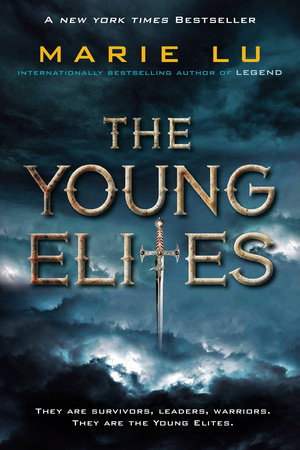
Ana's Rating
Readers Rating
From the publisher:
Adelina Amouteru is a survivor of the blood fever. A decade ago, the deadly illness swept through her nation. Most of the infected perished, while many of the children who survived were left with strange markings. Adelina’s black hair turned silver, her lashes went pale, and now she has only a jagged scar where her left eye once was. Her cruel father believes she is a malfetto, an abomination, ruining their family’s good name and standing in the way of their fortune. But some of the fever’s survivors are rumored to possess more than just scars—they are believed to have mysterious and powerful gifts, and though their identities remain secret, they have come to be called the Young Elites.
Teren Santoro works for the king. As Leader of the Inquisition Axis, it is his job to seek out the Young Elites, to destroy them before they destroy the nation. He believes the Young Elites to be dangerous and vengeful, but it’s Teren who may possess the darkest secret of all.
Enzo Valenciano is a member of the Dagger Society. This secret sect of Young Elites seeks out others like them before the Inquisition Axis can. But when the Daggers find Adelina, they discover someone with powers like they’ve never seen.
Adelina wants to believe Enzo is on her side, and that Teren is the true enemy. But the lives of these three will collide in unexpected ways, as each fights a very different and personal battle. But of one thing they are all certain: Adelina has abilities that shouldn’t belong in this world. A vengeful blackness in her heart. And a desire to destroy all who dare to cross her.
It is my turn to use. My turn to hurt.
I picked up the novel’s sequel, The Rose Society, immediately upon capping The Young Elites, so you’ll have to forgive me if throughout this review the books begin to bleed together. I’ll endeavour to limit my jive to the series debut, but I make no guarantees.
Set in a loose rendition of Renaissance Italy, The Young Elites features the survivors of a blood fever that ravaged a world. In Kenettra, those who were untouched by the disease remain pure of heart. Those who contracted the illness and lived to tell the tale, however, are malfettos: they are disdained, they are resentful, and they are waiting. For there are those among them who possess gifts beyond imagination, and despite being a new fantastical translation of the Island of Misfit Toys, they are ready to fight back.
In this sense, at least, The Young Elites is teenagedom to the nth power: dark and angsty yet burning brightly, a fantasy wherein every event is the apocalypse and every ex is Beelzebub himself. Within these pages Marie Lu has perfectly captured the essence of (smells like) Teen Spirit, complete with hoarse vocals shouting at us to turn off the lights.
The romance is conceivably the most transcendent component of the novel. Or perhaps I should say the lack of romance– indeed, Marie Lu does in no way grace us with even a modicum of spray tan love. We are left instead with a swarthy prince on the rebound, a beautiful male courtesan not currently occupied in a love interest-type position, and a silver-haired sweetheart who just wants to be loved. The results? Minimal (although extant) amounts of pining, kissing, and other such youthful debauchery. Many of you may find this to be thoroughly tragic, although personally I was quite (wickedly) pleased. Because as Marie Lu herself might tell you, given the opportunity and hopefully vast expanses of caffeine, our Adelina has enough on her plate without adding relationship melodramatics to the mix. She’s already struggling with a missing eye, unconstrained power over all human senses, and an accidental patricide issue with a dash of autocratic reign. She simply does not have the time nor the inclination to rewrite her story of epic villainy as a sensual romance.
Yes, The Young Elites is above all a tale of antiheroes. There is no right, no wrong, no moral of the story. There is only power, and the lengths to which one may go to achieve and maintain it. This makes all of our characters fundamentally interesting, Adelina the most so. For she is karma incarnate, the right hand of revenge, and her wrath knows no bounds and no apologies. And yet we as readers are asked to sympathize, to understand the whys and wherefores of her actions, and ultimately to accede them. For this reason, Adelina cannot be a villain in the strictest sense of the word, for we readers are perpetually aware, in some dark corner in the back of our minds, of where our loyalties should lie– and that is with the protagonist.
The narration is quirky and at times hard to follow, but I like it, and will keep coming back for more. It is with breathless anticipation and no small supply of apprehension that I await the trilogy’s conclusion, to be published October 11th. Until then, Marie Lu, I wish for you copious mirth and perhaps a trifle of humour for your toolbox. You never know when you’ll need them.
Recommended for fans of tortured souls, macabre downfalls, and eyepatches. 4.3/5 stars.
I’ll keep you posted,
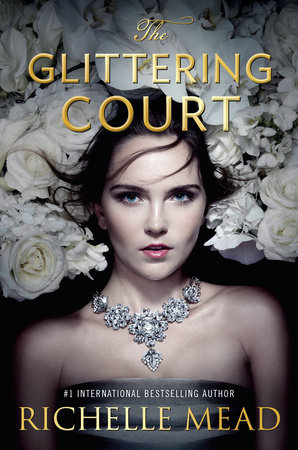
Ana's Rating
Readers Rating
From the publisher:
A dazzling, romantic new fantasy series set in a mix of Elizabethan and frontier worlds from Richelle Mead, #1 internationally bestselling author of Vampire Academy.
Big and sweeping, spanning the refined palaces of Osfrid to the gold dust and untamed forests of Adoria, The Glittering Courttells the story of Adelaide, an Osfridian countess who poses as her servant to escape an arranged marriage and start a new life in Adoria, the New World. But to do that, she must join the Glittering Court.
Both a school and a business venture, the Glittering Court is designed to transform impoverished girls into upper-class ladies capable of arranging powerful and wealthy marriages in the New World. Adelaide naturally excels in her training and even makes a few friends: the fiery former laundress Tamsin and the beautiful Sirminican refugee Mira. She manages to keep her true identity hidden from all but one: the intriguing Cedric Thorn, son of the wealthy proprietor of the Glittering Court.
When Adelaide discovers that Cedric is hiding a dangerous secret of his own, together, they hatch a scheme to make the best of Adelaide’s deception. Complications soon arise—first, as they cross the treacherous seas from Osfrid to Adoria, and later, when Adelaide catches the attention of a powerful governor.
But no complication will prove quite as daunting as the potent attraction simmering between Adelaide and Cedric. An attraction that, if acted on, would scandalize the Glittering Court and make them both outcasts in wild, vastly uncharted lands. . . .
Unwilling to marry an itchy cousin to save her family from mounting debt, the young Countess of Rothford decides to run away and join the Glittering Court. This ladies’ finishing school is designed to pass off common girls as ‘New Nobility’, in order to sell them as wives to men in the New World. Now, from a purely objective standpoint, the rationale behind Adelaide’s decision is perfectly sapient. Embracing one’s deep-seated sense of adventure by abdicating one arranged marriage to barrel into another, all the while flying the proverbial familial coop and abandoning exactly one (1) bereft grandma, is what we all would do in such a situation, I’m sure. And you haven’t even heard the best part! In her reckless abandon of cousin Lionel, Adelaide surrenders all pretenses of modern decorum and trades a tactfully (although questionably) arranged marriage for something much baser: glorified human trafficking.
Which brings me to my next point: the world inaugurated by Mead in this startling series debut spins on an axis of misogyny and prejudice. Not only is the society portrayed in The Glittering Court imbued with sexism and other such crimes against humanity, but its plot is built on these elements, and could not exist without them. Mead has spun a tale so deeply entrenched in the degradation of women that her protagonist would fail to have a story in its absence. Unfortunately, this is not a matter of dowries or gold diggers or even star-crossed love between castes; this is about an organized, lawful business whose primary mission is the sale of women.
Adelaide, naturally, is rescued from this harrowing enmity only by true love’s kiss. Oblivious to the inequity surrounding her, she chooses instead to invest the entirety of her energy and attention into the spray tan love for which YA is so notorious. And thank God for that, because what ever would she do without a big, strong man to save her? (Never mind a tall, dark, and handsome one!) By accepting the incredible misogyny widespread throughout her culture without so much as lifting a finger– or raising a voice, or shaping a thought– against it, it seems obvious to me that Adelaide condones it. It is my pressing belief that this is a you’re-either-for-us-or-against-us situation. And it seems that our darling Adelaide, dear readers, too preoccupied with the sweep of her hair and the hue of her gowns, is against us.
I’m not wholly sure of the terminology, but I’ve heard The Glittering Court addressed as a half-fantasy; part Victorian England, part Belle Époque France, and part colonial America, with none of the magic to see it all through. Mead showers her plot in various elements and values stemming from each of these eras with no apparent common thread to tie them together, and nothing of value to add to them. Needless to say, the world building fails. The geography is preliminary at best, the social hierarchy is grandly detailed and yet still ostensibly boring, and the theocracy borders perfunctory. If you’re going to blame a dystopia on a constitutional lack of laïcité, please feel free to give the religion in question some substance.
Additionally, Mead tempts us to read on by dangling promises of deep, dark secrets to come from each of her secondary characters like apples in front of a horse. For instance, no one knows what Tamsin has at stake, Mira is withholding the basis for her nightly jaunts, and Cedric is harboring a secret that may very well cost him his head. In the end, we never do discover the nature of Tamsin’s collateral; Mira’s enigma is easy enough to piece together, if seemingly extraneous; and Cedric’s big secret is honestly just trite. There’s no way around it– I couldn’t imagine a bigger anticlimax in that regard if tried.
I’m told that the reason we learn so little about Tamsin and Mira in this installment is that The Glittering Court is slated as a companion series; these ladies will feature as protagonists in their own novels. I couldn’t tell you for sure, though. I certainly don’t plan on reading them.
I will say this: The Glittering Court is a fast-paced read and a lovely romance. Although these features in no way compensate for its faults, they did provide me with much needed satisfaction and regalement.
Recommended for all those unwilling to rage against the machine. 1.4/5 stars.
I’ll keep you posted,

![[Twitter]](http://www.whatyareading.com/wp-content/plugins/bookmarkify/twitter.png)


